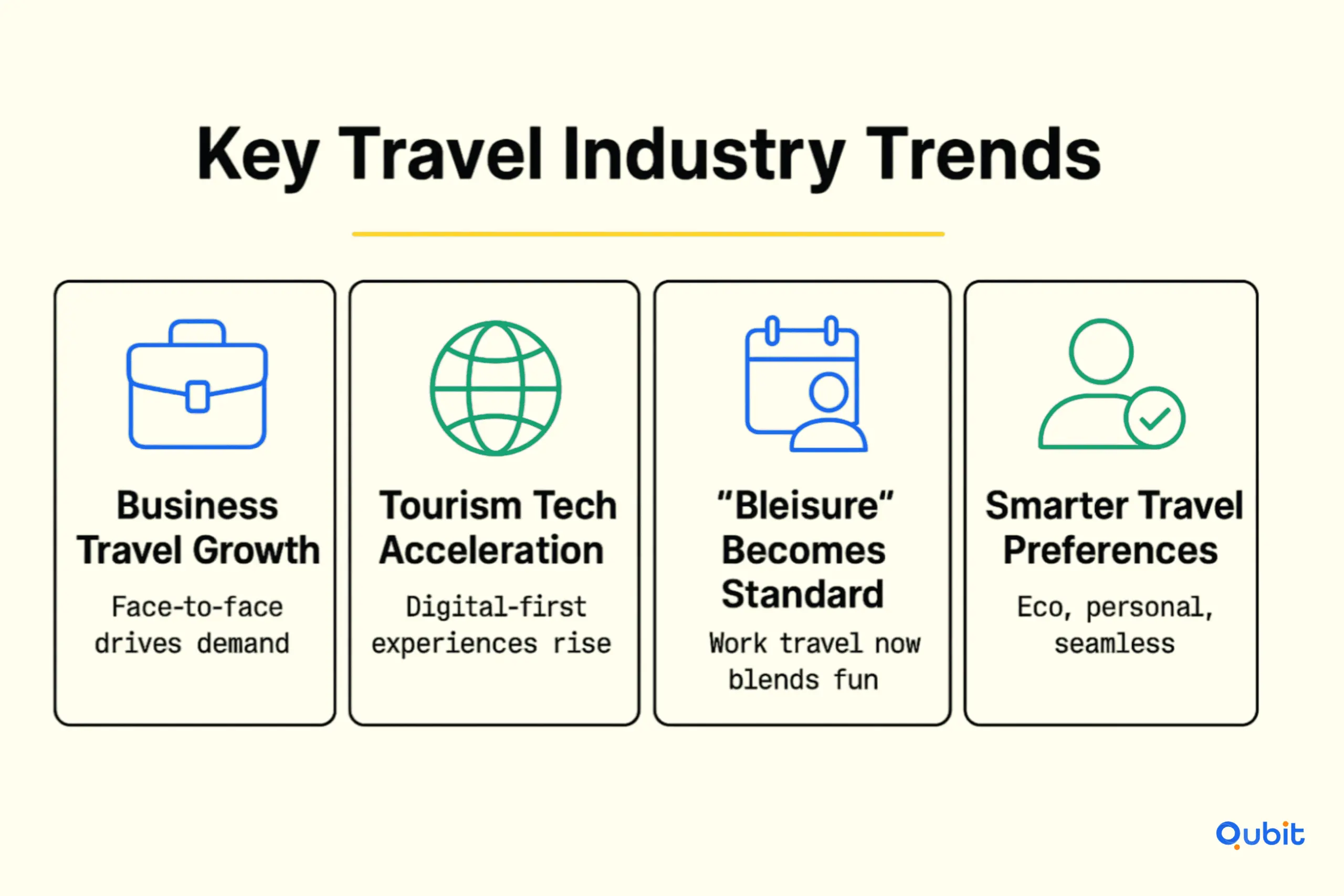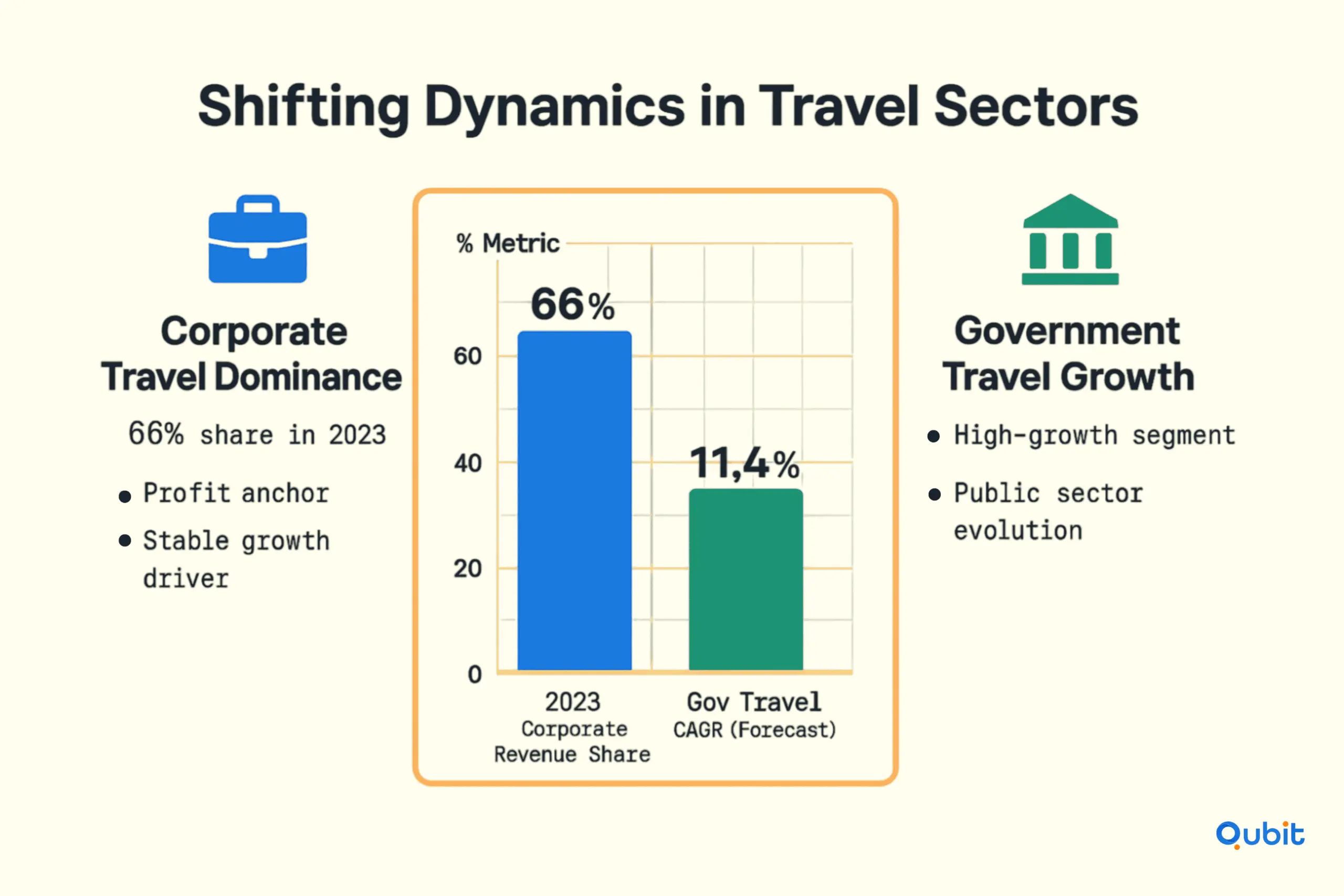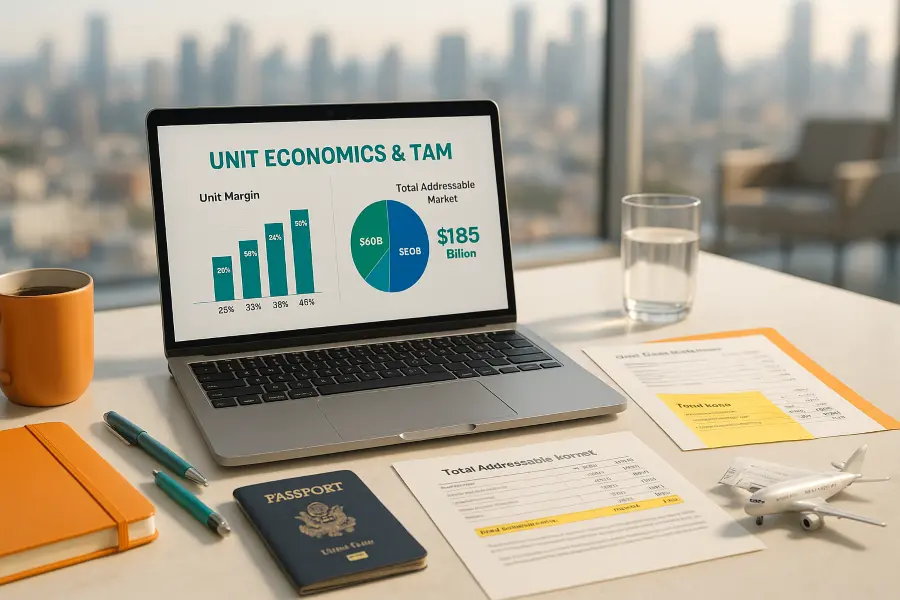The travel industry is a dynamic and rapidly growing sector, offering immense potential for businesses to thrive. Understanding the Travel Market Opportunity begins with analyzing two critical components: Unit Economics and Total Addressable Market (TAM). These metrics provide a foundation for evaluating profitability and market size, helping businesses identify sustainable growth strategies.
A discussion of unit economics and TAM connects naturally with travel startup fundraising strategies, offering you a broader framework for understanding market valuation within the funding landscape.
This article aims to deliver a data-driven exploration of market size, profitability metrics, and emerging trends in both tourism and business travel. Let’s jump right in!
Travel Market Overview and Summary
The global travel market is undergoing remarkable transformation, fueled by evolving consumer preferences and technological advancements. This dynamic sector is poised for substantial growth, presenting significant Travel Market Opportunity for businesses and stakeholders alike.
Key Trends Shaping the Travel Industry

Business Travel Expansion: The business travel segment is projected to grow significantly, driven by the increasing globalization of industries and the need for face-to-face collaboration. Companies are investing more in travel to foster partnerships and enhance productivity.
Tourism Growth Through Digital Transformation: Tourism is experiencing a surge, largely attributed to digital innovations. From AI-powered booking platforms to virtual tours, technology is reshaping how travelers plan and experience their journeys.
Blending Business and Leisure Travel: A notable trend is the integration of business and leisure travel, often referred to as "leisure." Professionals are extending work trips to explore destinations, merging productivity with relaxation.
Changing Consumer Behaviors: Travelers today prioritize personalized experiences, sustainability, and convenience. These shifting preferences are influencing how travel services are designed and delivered.
You can also identify investor opportunities by thoroughly assessing the market needs within the travel industry and then prepare your startup pitch deck to impress the investors.
Market Insights and Statistics
The Total Addressable Market (TAM) for travel continues to expand, with billions of dollars in annual revenue generated globally. According to industry reports, the travel sector is expected to grow at a compound annual growth rate (CAGR) of over 7% in the next decade. This growth underscores the immense potential for businesses to capitalize on emerging opportunities.
As the travel market evolves, businesses must adapt to these trends to remain competitive. Whether through innovative technologies or tailored services, the ability to meet consumer demands will be key to success.
Market Concentration & Characteristics
The business travel market is undergoing significant transformation, shaped by technological advancements and evolving regulations. With the rise of innovative mobile applications and strict regulatory frameworks, businesses are adapting to new ways of managing travel needs.
Innovation Driving Business Travel Trends
Advanced mobile applications are redefining how companies approach travel planning and execution. From seamless booking platforms to real-time itinerary updates, these tools enhance efficiency and user experience. Additionally, regulatory frameworks are influencing market dynamics, ensuring compliance and safety standards remain a priority.
Emerging Substitutes Impacting Travel Frequency
Service substitutes like virtual meetings and telepresence are reshaping traditional business travel patterns. These alternatives offer cost-effective and time-saving solutions, reducing the need for frequent physical travel. As companies increasingly adopt these technologies, the demand for traditional travel services is shifting, prompting providers to innovate further.
An analysis of market opportunity is enriched by the clarity provided in travel startup pitch deck tips, which frames the practical aspects of investor presentations.
Industry Insights

The corporate and government travel sectors are undergoing significant transformations, reshaping revenue dynamics and growth trajectories. Corporate travel dominated the market in 2023, contributing a substantial 66% of the total revenue share. This highlights the enduring importance of business-related travel in driving industry profitability.
Meanwhile, the government travel segment is poised for remarkable growth, with forecasts predicting an 11.4% compound annual growth rate (CAGR). This expansion underscores the increasing demand for streamlined travel solutions within public sector operations.
These trends reveal a dual focus within the industry: maintaining the robust performance of corporate travel while capitalizing on the emerging opportunities in government travel. Businesses and policymakers alike are adapting to these shifts, ensuring their strategies align with evolving market demands.
Marketing-Driven Travel: A Revenue Powerhouse
Marketing-driven travel emerged as a significant contributor to revenue in 2023, accounting for 37% of total earnings. This trend highlights the growing importance of experiential campaigns and destination-focused strategies in capturing consumer interest. Businesses that align their marketing efforts with travel-related experiences can tap into this lucrative segment, creating memorable brand interactions that drive both engagement and profitability.
Product Launches: Sustained Growth Through Innovation
Product launches continue to demonstrate robust growth, with a compound annual growth rate (CAGR) of 10.9%. This steady increase underscores the value of innovation and timely market entry in maintaining competitive advantage. Companies investing in research and development, coupled with strategic launch planning, can capitalize on evolving consumer demands and establish themselves as industry leaders.
MVP Development: Enhancing Investor Appeal
Minimum viable product (MVP) development plays a pivotal role in attracting investor interest. By focusing on UX/UI design and feature roadmaps, startups can present a compelling case for scalability and market fit, making them more attractive to potential investors.
Recent Developments in Travel Sector
The travel industry continues to evolve, driven by strategic collaborations and advancements in technology. One notable example is BCD Travel, which strengthened its partnership with Sabre in November 2022. This move aimed to enhance booking volumes and streamline operations, showcasing how established players are integrating digital platforms to stay competitive.
Another significant development occurred in April 2021 when Flight Centre Travel Group upgraded its connectivity infrastructure. This initiative focused on modernizing booking systems, reflecting the industry's commitment to faster and more efficient services.
Business Travel Market Report Scope
Understanding the scope of the business travel market report is crucial for strategic planning. This comprehensive analysis delves into revenue forecasts, company rankings, competitive landscapes, and growth drivers, equipping businesses with the insights needed to make informed investment decisions.
Key Components of the Report
Revenue Forecasts
The report provides detailed revenue projections, enabling stakeholders to anticipate market trends and allocate resources effectively. These forecasts are essential for identifying lucrative opportunities and mitigating risks in the evolving business travel sector.Company Rankings
Gain insights into the performance of leading companies within the market. The rankings highlight industry leaders, offering benchmarks for competitive analysis and strategic positioning.Competitive Landscapes
Explore the dynamics of competition, including market share distribution and strategic initiatives by key players. This section helps businesses understand their competitors and refine their strategies to maintain or enhance their market presence.Growth Drivers
The report identifies critical factors propelling market growth, such as technological advancements, shifts in corporate travel policies, and emerging trends. These insights are invaluable for aligning business strategies with market demands.
Conclusion
Unlocking market potential requires a clear understanding of strategies and data-driven insights. By analyzing market size, unit economics, and Total Addressable Market (TAM), businesses can make informed decisions that drive growth. Integrating analytics from business travel and tourism further enhances this process, offering a comprehensive view of opportunities within these sectors.
We encourage you to apply these insights to your strategic planning and investment decisions, ensuring a competitive edge in dynamic markets. At Qubit Capital, we specialize in creating tailored pitch decks that align with your goals. Let us help you present your vision effectively. Explore our pitch deck creation services today!
Key Takeaways
- Comprehensive analysis of market size, unit economics, and TAM offers actionable insights.
- Emerging trends include the integration of business and leisure travel and digital transformation.
- Detailed segmentation helps in identifying targeted investment and marketing opportunities.
- Competitive and regional analyses provide strategic context for future growth.
- Utilize data-driven strategies to enhance investor presentations and funding pitches.
Frequently asked Questions
What is the size of the travel market?
The travel market is immense, with the business travel segment alone projected to exceed USD 1.6 trillion by 2024. This growth is expected to continue steadily over the next decade, driven by factors such as increased globalization and evolving consumer preferences.


 Back
Back



